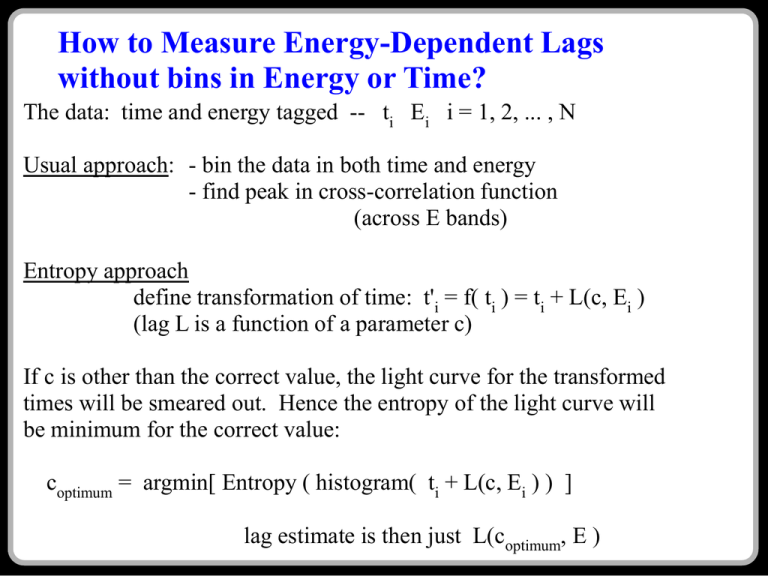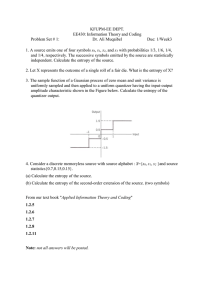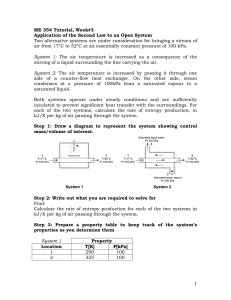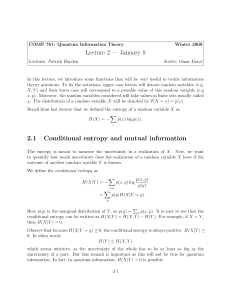How to Measure Energy-Dependent Lags without bins in Energy or Time?
advertisement

How to Measure Energy-Dependent Lags without bins in Energy or Time? The data: time and energy tagged -- ti Ei i = 1, 2, ... , N Usual approach: - bin the data in both time and energy - find peak in cross-correlation function (across E bands) Entropy approach define transformation of time: t'i = f( ti ) = ti + L(c, Ei ) (lag L is a function of a parameter c) If c is other than the correct value, the light curve for the transformed times will be smeared out. Hence the entropy of the light curve will be minimum for the correct value: coptimum = argmin[ Entropy ( histogram( ti + L(c, Ei ) ) ] lag estimate is then just L(coptimum, E ) How best to measure Energy-Dependent Lags? Entropy method: 1. Make histogram nk = number of transformed times t'i in bin k 2. Convert to a probability distribution: pk = nk / nk 3. Compute entropy: S(c) = pk log( pk ) 4. Minimize S(c) with respect to c Examples: t'i = f( ti ) = ti + c Ei (first term in Taylor expansion) t'i = f( ti ) = ti + c / Ei2 (finite photon mass dispersion relation)











